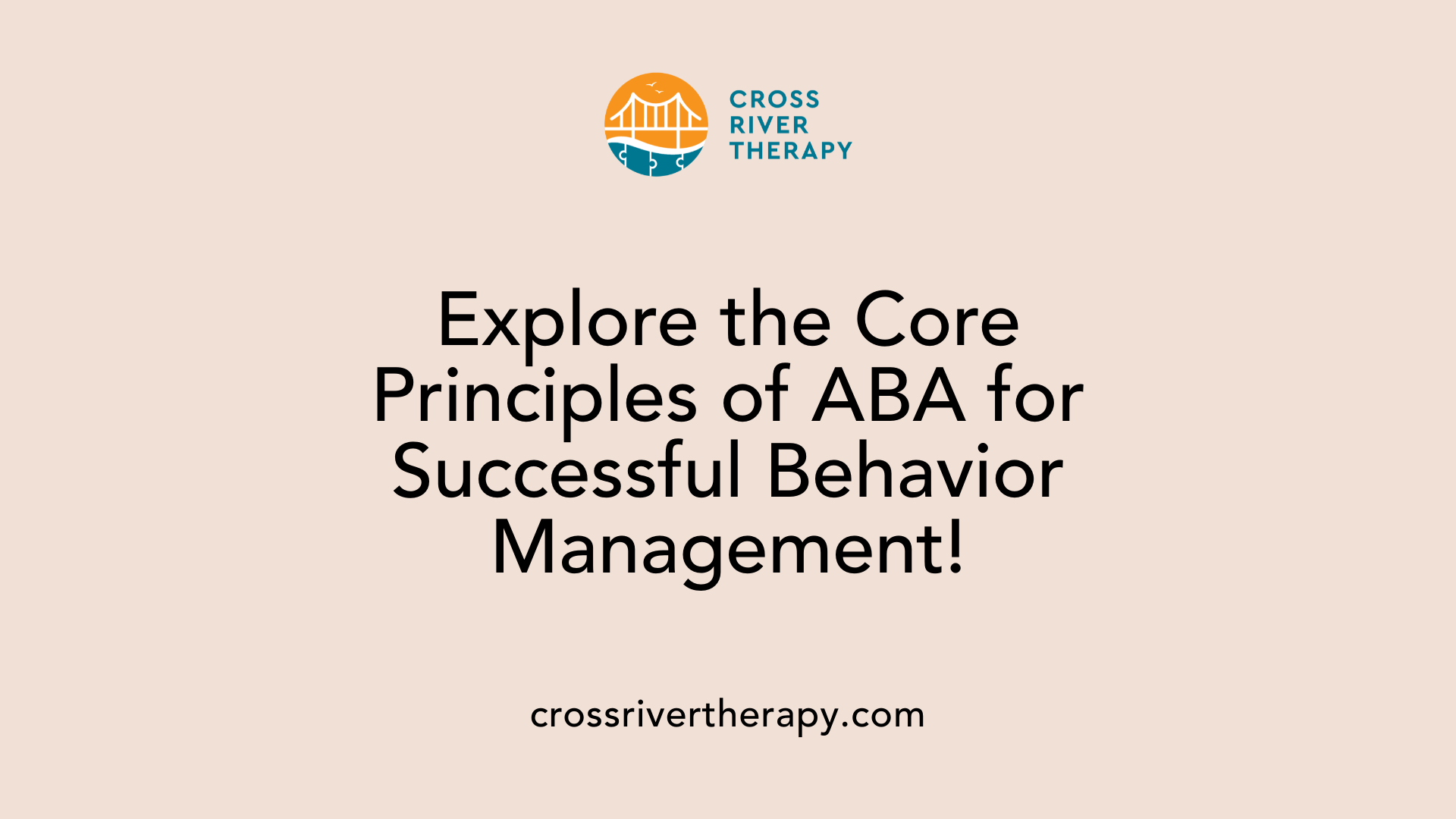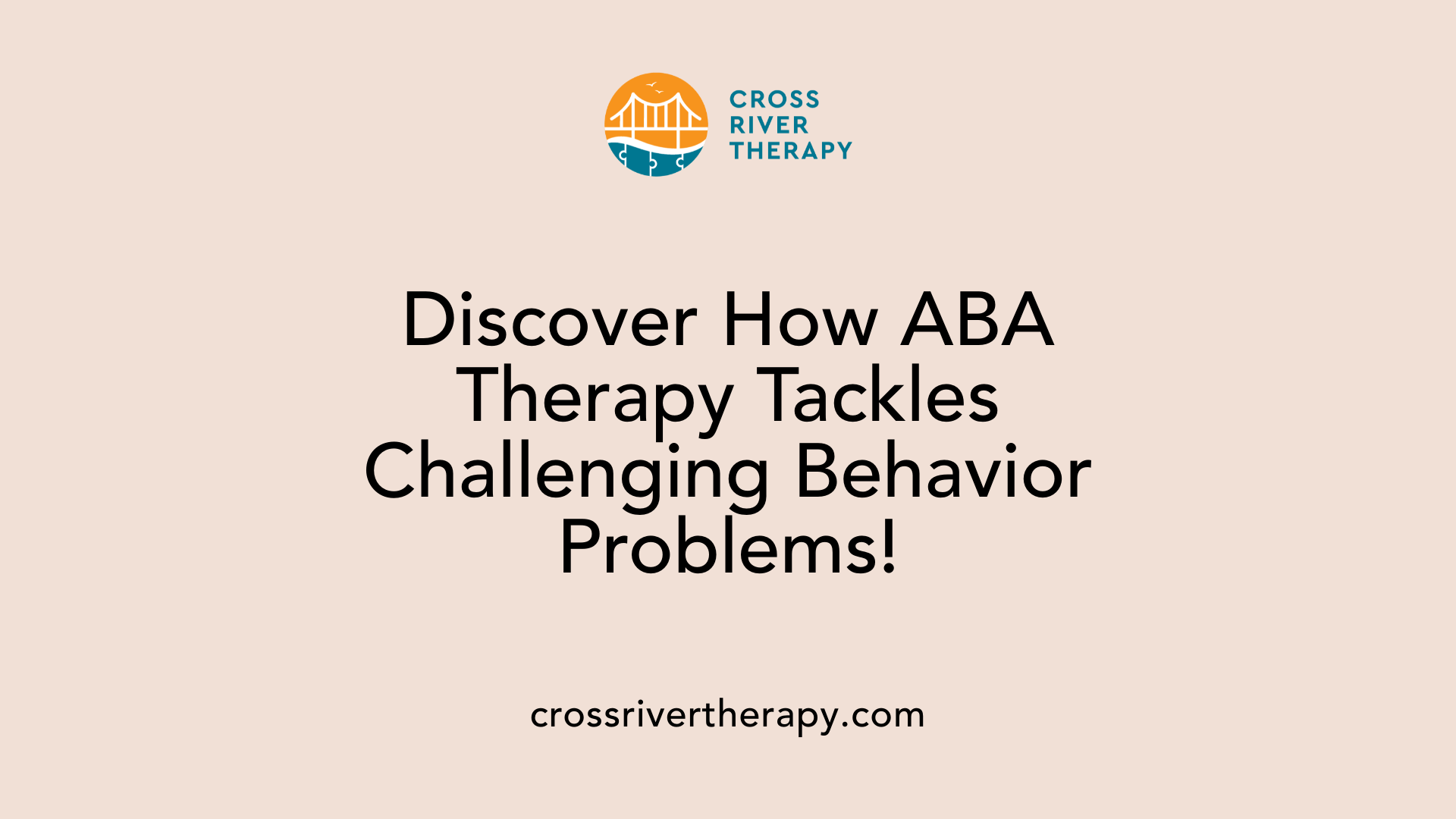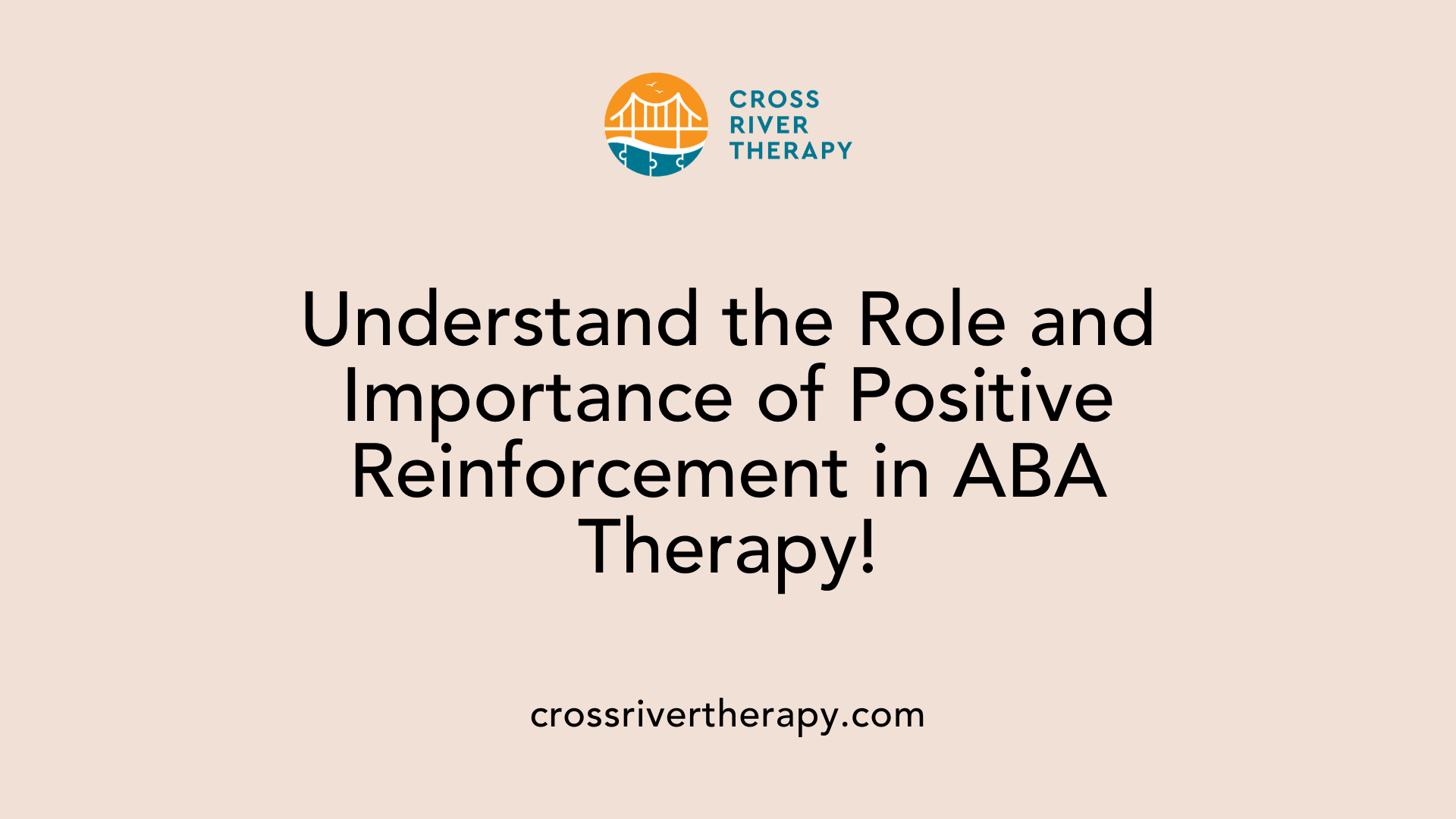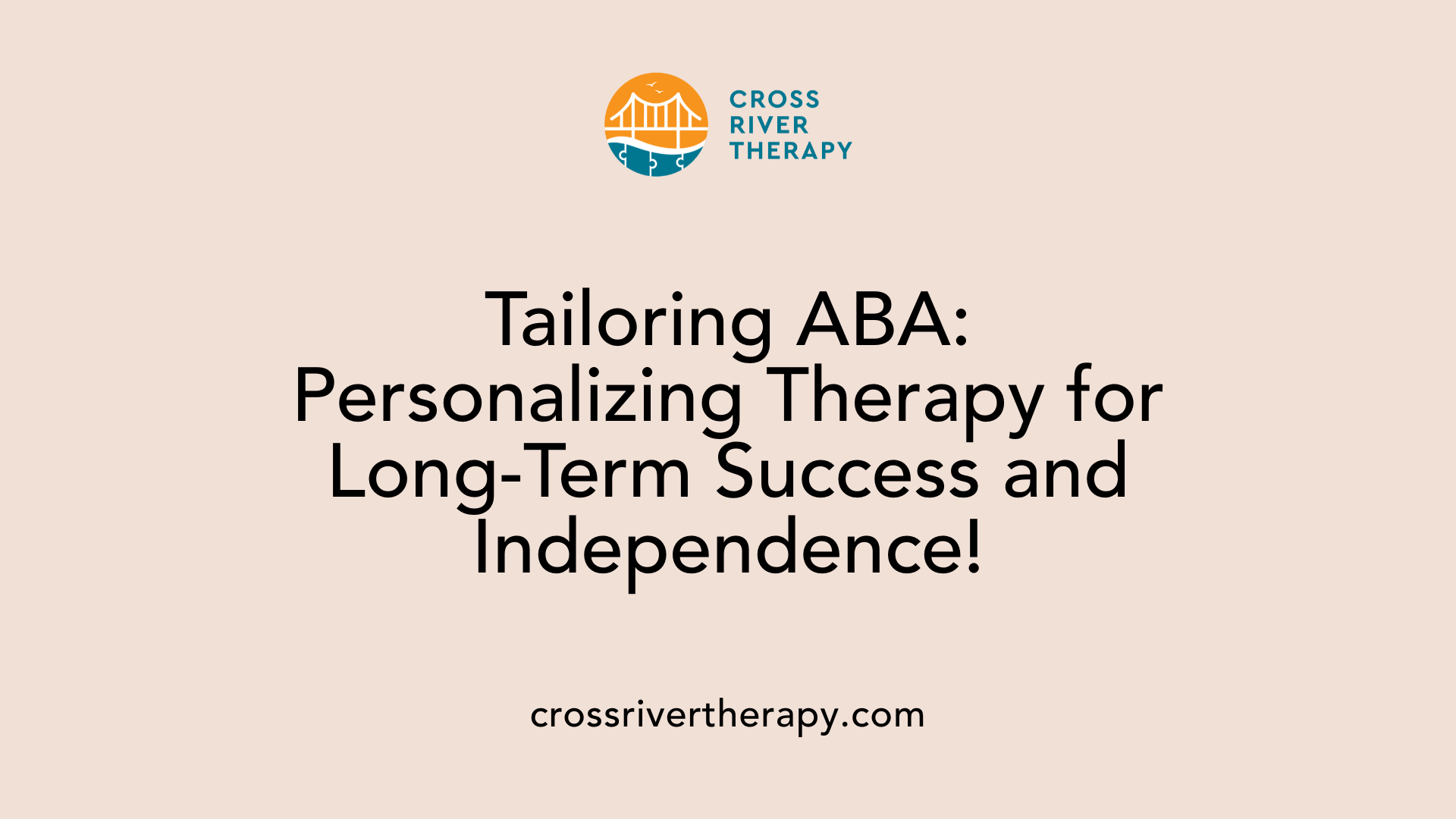How ABA Therapy Helps Manage Challenging Behaviors in Autism
Understanding ABA's Role in Tackling Autism-Related Behavioral Challenges
Introduction to ABA in Autism
Applied Behavior Analysis (ABA) therapy is a well-established approach widely used to manage challenging behaviors associated with Autism Spectrum Disorder (ASD). Known for its evidence-based techniques, ABA therapy has been instrumental in fostering positive behavioral changes, teaching new skills, and enhancing the quality of life for individuals with autism. This article delves into the mechanisms, strategies, and success stories behind ABA therapy, providing an insightful exploration of its effectiveness.
The Fundamentals of ABA for Behavior Management

What is ABA for behavior management?
Applied Behavior Analysis (ABA) for behavior management is an evidence-based approach aimed at improving socially significant behaviors, particularly in individuals with Autism Spectrum Disorder (ASD). This methodology employs various techniques, including positive reinforcement, prompting, and behavior chaining, to enhance skills and modify behaviors through systematic observation and data analysis.
ABA relies heavily on the principles of behaviorism, focusing on the relationship between behavior and its consequences. By developing individualized treatment plans that cater to each person's unique needs, ABA effectively addresses a wide range of behaviors. Techniques like the Functional Behavior Assessment (FBA) are pivotal in identifying the motivations behind challenging behaviors. This foundation allows practitioners to create targeted and effective interventions. Ultimately, ABA therapy seeks to increase helpful behaviors while decreasing harmful ones, significantly enhancing the independence and quality of life for individuals with ASD.
Importance for individuals with ASD
The significance of ABA for individuals with autism is profound. Many children with ASD exhibit challenging behaviors such as aggression, self-injury, and tantrums due to communication struggles. ABA interventions provide structured support, teaching essential communication and social skills through systematic strategies. This maximizes the potential for individuals to express their needs effectively and reduces reliance on maladaptive behaviors.
Techniques like positive reinforcement
One of the core techniques used in ABA is positive reinforcement, where desirable behaviors are rewarded to increase their occurrence. This method not only encourages positive change but also helps build confidence and persistence in individuals. For instance, a child may receive verbal praise or access to a preferred activity after successfully expressing their needs using words instead of acting out. This approach is not only effective but also fosters an engaging and motivating environment for learning.
Overview of ABA Techniques
| Technique | Description | Purpose |
|---|---|---|
| Positive Reinforcement | Rewards for desirable behaviors | Increases likelihood of repeated desired behaviors |
| Functional Behavior Assessment (FBA) | Identifies triggers and functions of behaviors | Guides the development of tailored interventions |
| Skill Acquisition | Teaching communication and social skills | Reduces reliance on challenging behaviors |
| Customized Treatment Plans | Individualized approach based on unique needs | Ensures effective and relevant interventions |
Engagement with ABA therapists trained in these methods can yield remarkable improvements in behavior, promoting a more fulfilling life for those affected by autism.
Addressing Behavior Problems with ABA

How does ABA therapy help with behavior problems?
Applied Behavior Analysis (ABA) therapy is a strategic intervention aimed at enhancing the lives of individuals with autism by equipping them with healthier behaviors. It specifically addresses severe behaviors such as aggression, self-injury, and elopement, which can obstruct the ability to engage in learning and community activities.
The therapy facilitates this process through functional behavior assessments (FBAs), which are crucial for identifying the root causes of challenging behaviors. By analyzing antecedents and consequences surrounding the behavior, BCBAs (Board Certified Behavior Analysts) can tailor strategies to meet each individual's unique needs effectively. This personalized approach enables more targeted interventions that can lead to significant behavioral improvements.
What role do reinforcement techniques play?
Reinforcement techniques are pivotal in ABA therapy, acting as tools to increase desirable behaviors. Positive reinforcement involves providing rewards or positive outcomes when individuals engage in appropriate behaviors, thus increasing the likelihood of these behaviors being repeated. Examples can include verbal praise, tokens, or access to preferred activities, making the process of learning more engaging.
By consistently applying these techniques, ABA therapy not only promotes the replacement of challenging behaviors with positive alternatives but also reinforces skills such as functional communication, which is fundamental for expressing needs without resorting to maladaptive behaviors.
Are there quality of life improvements?
The benefits of ABA therapy extend beyond direct behavioral changes, significantly improving the overall quality of life for individuals with autism. Interventions are designed to build essential communication and social skills, which are critical for fostering independence.
Through systematic training and support, children can learn to navigate social situations more effectively and articulate their needs with greater ease. This, in turn, reduces the frequency of challenging behaviors, thereby enhancing their ability to participate in everyday activities. Overall, ABA therapy creates a more supportive environment, paving the way for meaningful connections and improved life experiences.
Identifying and Managing Challenging Behaviors in ABA
What is challenging behavior in ABA therapy?
Challenging behavior in ABA therapy typically includes actions that hinder the individual's autonomy and may lead to adverse consequences such as social isolation or learning disruptions. These behaviors include refusal to comply with instructions, noncompliance, and task avoidance. They often stem from internal factors, such as anxiety or lack of motivation, which complicate the individual’s ability to engage productively.
While challenging behaviors are significant, it’s crucial to differentiate them from problem behaviors. Problem behaviors often manifest as aggression, self-injury, or other actions that directly interrupt day-to-day functioning. Such behaviors are frequently reinforced through social attention, complicating their management.
Strategies to address these behaviors
Addressing challenging behaviors in ABA involves a structured approach. First, a functional behavior assessment (FBA) is conducted to identify triggers and underlying causes. This understanding allows for the development of tailored behavior intervention plans (BIPs).
A variety of strategies are employed:
- Behavioral Skills Training (BST): This method breaks desired behaviors into smaller, teachable components. Each step is practiced and reinforced, encouraging the individual to learn appropriate responses systematically.
- Positive Reinforcement: Rewarding desired behaviors increases the likelihood of repetition, while discouraging undesired behaviors.
- Functional Communication Training (FCT): This strategy teaches individuals alternative communication methods, aiding them in expressing needs in more acceptable ways.
By implementing these effective strategies, ABA therapy aims to reduce challenging behaviors and enhance communication and social skills, ultimately fostering greater independence for individuals.
Techniques in ABA for Managing Aggressive Behaviors

What techniques are used in ABA therapy for managing aggressive behavior?
ABA therapy employs several strategies to effectively manage aggressive behaviors, focusing on reinforcing positive actions while simultaneously addressing the roots of aggression. Positive reinforcement is a fundamental technique whereby desirable behaviors are rewarded with praise, tokens, or access to preferred activities. This way, individuals learn that compliance leads to positive outcomes, encouraging them to engage in non-aggressive interactions.
Functional assessments play a crucial role in understanding the underlying reasons for aggressive behaviors. By examining what happens before (Antecedent) and after (Consequence) an aggressive outburst, therapists can tailor interventions to meet the individual's specific needs. This personalized approach helps in replacing aggressive actions with appropriate alternatives that fulfill the same needs, effectively reducing future incidents.
Behavioral momentum is another effective technique utilized in ABA therapy. This strategy involves starting with simpler tasks that the individual is likely to succeed at, gradually moving on to more challenging tasks as confidence builds. This method not only helps in maintaining engagement but also teaches impulse control, which is essential in reducing aggressive responses.
In summary, by employing positive reinforcement, conducting functional assessments, and applying behavioral momentum, ABA therapy can effectively manage aggressive behaviors, fostering a supportive and constructive environment for individuals with autism.
Positive Reinforcement: A Pillar of ABA Therapy

Role of Positive Reinforcement
Positive reinforcement is a foundational element in Applied Behavior Analysis (ABA) therapy. It involves introducing a stimulus following a desired behavior, such as rewards or verbal praise, to enhance the chances that the behavior will be repeated. This approach is crucial for facilitating behavior change and helps individuals, particularly those with autism spectrum disorder (ASD), acquire new skills while enhancing their self-esteem.
How is Positive Reinforcement Applied in ABA Therapy?
In practice, positive reinforcement leverages the ABC Model (Antecedent, Behavior, Consequence) to shape behaviors. Therapists analyze what happens before (Antecedent) and after (Consequence) a specific Behavior. The reinforcement must be:
- Immediate: Applied shortly after the desired behavior to establish a clear connection.
- Contingent: Directly linked to specific behaviors to help individuals understand what actions are satisfactory.
- Tailored: Customized to the individual’s preferences, including social praise, tangible rewards, or tokens.
Through consistent application of these principles, therapists encourage positive behaviors that lead to significant progress in therapy.
Importance of Individualization
Individualization is a key factor when applying positive reinforcement. Each child has unique needs, preferences, and responses to reinforcement strategies. An effective ABA program recognizes these individual differences, allowing BCBAs to develop customized treatment plans that focus on improving skills in communication, social interactions, and daily living activities.
By closely observing the responses to reinforcement, therapists can adjust strategies quickly, ensuring that the support provided remains effective and engaging for each child, thus fostering a supportive and conducive learning environment.
Tailoring ABA for Individual Needs and Long-Term Success

Personalized Treatment Plans
Personalized treatment plans are essential in Applied Behavior Analysis (ABA) therapy. Each child has unique needs, and Board Certified Behavior Analysts (BCBAs) create customized strategies based on comprehensive assessments. This includes a Functional Behavior Assessment (FBA) that identifies the triggers and functions behind challenging behaviors. By understanding these aspects, BCBAs tailor interventions that aim to teach new skills and reduce harmful behaviors effectively.
Early Intervention's Significance
The significance of early intervention in ABA therapy cannot be overstated. Research indicates that intensive ABA therapy, particularly when started early—ideally between ages 2 to 3—can lead to more favorable outcomes in cognitive, language, and social skills. Early treatment helps mitigate communication struggles that often lead to challenging behaviors, allowing children to learn functional communication methods effectively before maladaptive behaviors become ingrained.
Generalization of Learned Behaviors
Generalization of learned behaviors is a crucial goal in ABA therapy. Ensuring that the skills acquired are applicable across different settings and situations enhances the individual's overall independence. Techniques are employed to promote this generalization, such as practice in natural environments, ensuring that progress translates beyond the therapy context. For example, a child might learn to use functional communication skills at home and in school, ensuring the behaviors are retained and utilized in real-life scenarios.
Conclusion
ABA therapy stands out as a comprehensive and adaptable approach for managing the challenging behaviors associated with autism. Its strengths lie in the customization of treatment plans, the use of positive reinforcement, and the consistent application of strategies tailored to individual cases. Through early intervention and targeted techniques like Functional Communication Training, ABA therapy significantly enhances the ability of children with ASD to communicate effectively, ultimately reducing maladaptive behaviors. The therapy's evidence-based framework ensures that each child receives the support they need to develop essential life skills and achieve greater independence, highlighting its pivotal role in enhancing the lives of individuals with autism and their families.
References
- Utilizing ABA to Address Challenging Behaviors
- ABA Therapy for Behavior Management - The Place
- Managing Challenging Behaviors for Children with Autism
- Applied Behavior Analysis (ABA) | Autism Speaks
- Can ABA Therapy Help Manage Challenging Behaviors in Autism?
- Challenging Behaviors and Autism
- How ABA Therapy Helps Manage ASD Behaviors
- Expert Q&A: How ABA therapy can help with severe behaviors
- Managing Challenging Autism Behavior Problems
- How ABA Therapy Can Improve Your Child's Life



